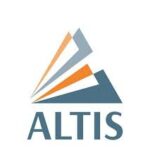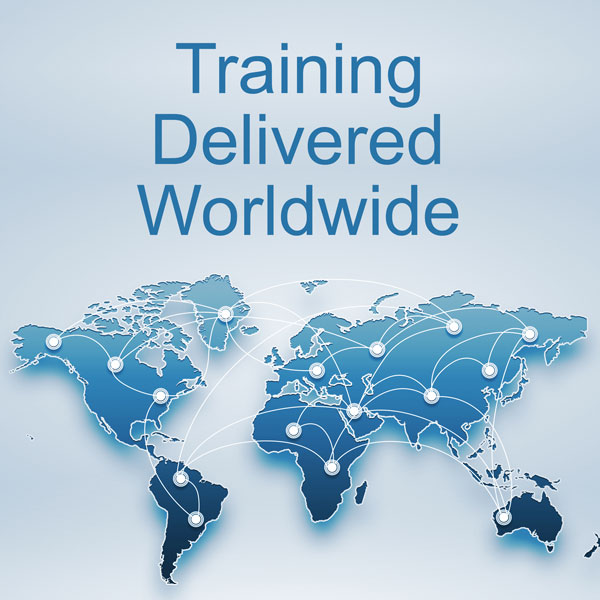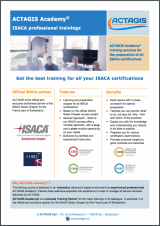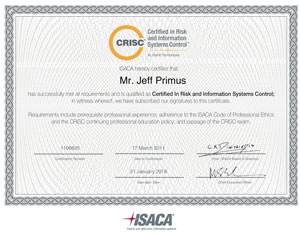CRISC ® : Certified in Risk and Information Systems Control
Training Courses and Certification Exam Preparation (Bootcamp)
We also deliver all our courses online through live interactive video sessions. Discover our Certifying Training Options.
We have advised more than 400 companies and trained over 1500 professionals. Will you be next?
Next courses (more below)
Risk management
CRISC is the only globally
The CRISC Job Practice Area consists of five “domains”, 39 “tasks” and 71 “knowledge statements”. Because the different tasks refer to the relevant COBIT processes, COBIT is an integral part of the CRISC training and certification.
This training is

CRISC ISACA Training
ACTAGIS, based on a long partnership with the ISACA Swiss Chapter, proposes learning and preparation classes for all ISACA certifications (also worldwide for in-house trainings).

We guarantee your exam success
Nearly 100% success rate!
We will support you until you pass the exam of the course in which you enroll (some conditions apply). We offer the official mock exams to help you prepare.

Swiss Quality around the world
Our attention to detail, staying up to date, all reflect our commitment to quality. Our trainers bring real-life project experience in implementing frameworks and programs in large organizations.

Free consulting session included
Most of our training programs include a supplementary free online consulting session to help you implement your project in your organisation.

Competitive pricing
To ensure that our courses are available to all sizes of companies, we practice competitive pricing.

Learn from where you are
Our courses are delivered in a traditional classroom setting, as well as live online with an instructor. Certain courses are also available in a self-study format.
Modular approach
The course is presented in two modules:
- Module 1 is a detailed 9 day course covering all CRISC material
- Module 2 (Exam Bootcamp) is a 3 day exam preparation session
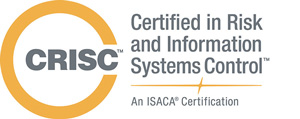
Module 1
A detailed 9 day course
In this module, we will go through all CRISC themes, in a detailed manner. This module contains:
- Theoretical and conceptual sections
- Case studies
- Tests by theme
- Group work
- Interactive sessions
Module 1 is mostly aimed at the following profiles:
- Chief Information Officer
- Security Officer
- Compliance Officer
- IT project manager
- IT Architect
- IT Resources Manager
Module 1 of this course is subdivided into 8 chapters, covering all CRISC Job Practice Areas in details, by going through the following chapters:
- Introduction (1 day): ISACA, CRISC Job Practice Areas, course concept, learning technique, personal study
- Basics (2 days): IT risk management & ICS (Internal Control System), IT governance
- Application lifecycle (1 day): Project management, software development, integration, security, user controls
- Organisational security (1 day): Economic & IT criminality, risk analysis, cultural aspects of security, awareness-training
- Risk management (1 day): Identification, assessment and management of IT risks. Comparison of various frameworks such as ISO 27005, RiskIT
- Performance management (1 day): Maturity models, Key Performance Indicators, Balanced Score Card, Benchmarking
- Risk monitoring (1 day): Risk assessment and monitoring, risk indicators, register and landscapes
- ICS consolidation (1 day): Controls and control techniques for processes, applications and IT, Internal Control System (ICS) monitoring, audit preparation
Days
Courses highlighted in green are rapidly filling up.
Don't miss out.
Upcoming courses
Course dates can be based on your requirements. Please contact us for the corresponding in-house or public session trainings, so that we can propose sessions taking into account your availability.
Module 2 – Exam Bootcamp
A 3 day exam preparation session
- Learning Objectives
- Target Audience
- Our added value
- Course content
- References to job descriptions and standards
- Certification
- Examination fee
This training is intended to professionals who have already had IT experience. It is recommended for the participants to have a detailed knowledge of the CRISC Job Practice Area and having read through the CRISC Review Manual prior to taking the course and, ideally, to have several years of professional experience in different areas of IT. The CRISC exam preparation course is aimed at all persons who deal with the governance, audit or security of information systems, such as:
- Chief Information Officer
- Security Officer
- Compliance Officer
- IT project manager
- IT Architect
- IT Resources Manager
The first two and a half days of the course consist of an intensive and systematic review of all tasks within the CRISC Job Practice Area. Here the aspects which are important from the examination perspective are presented, without going into the details of each task, which is why some level of expertise is required. Those who would like to study all CRISC tasks in detail should join our advanced course.
Following the initial phase, a realistic test examination is organized (in English). After this test exam, we will discuss the results during the last day of the training. You will also be provided with a second test, which you can perform on your own time. We will then correct it and send you back your results.
The domains covered by this certification are:
- Risk Identification (27%)
- IT Risk Assessment (28%)
- Risk Response and Mitigation (23%)
- Risk and Control Monitoring and Reporting (22%)
Domain 1—IT Risk Identification – (27%)
Identify the universe of IT risk to contribute to the execution of the IT risk management strategy in support of business objectives and in alignment with the enterprise risk management (ERM) strategy.
- Collect and review information, including existing documentation, regarding the organization’s internal and external business and IT environments to identify potential or realized impacts of IT risk to the organization’s business objectives and operations.
- Identify potential threats and vulnerabilities to the organization’s people, processes and technology to enable IT risk analysis.
- Develop a comprehensive set of IT risk scenarios based on available information to determine the potential impact to business objectives and operations.
- Identify key stakeholders for IT risk scenarios to help establish accountability.
- Establish an IT risk register to help ensure that identified IT risk scenarios are accounted for and incorporated into the enterprise-wide risk profile.
- Identify risk appetite and tolerance defined by senior leadership and key stakeholders to ensure alignment with business objectives.
- Collaborate in the development of a risk awareness program, and conduct training to ensure that stakeholders understand risk and to promote a risk-aware culture.
Domain 2—IT Risk Assessment – (28%)
Analyze and evaluate IT risk to determine the likelihood and impact on business objectives to enable risk-based decision making.
- Analyze risk scenarios based on organizational criteria (e.g., organizational structure, policies, standards, technology, architecture, controls) to determine the likelihood and impact of an identified risk.
- Identify the current state of existing controls and evaluate their effectiveness for IT risk mitigation.
- Review the results of risk and control analysis to assess any gaps between current and desired states of the IT risk environment.
- Ensure that risk ownership is assigned at the appropriate level to establish clear lines of accountability.
- Communicate the results of risk assessments to senior management and appropriate stakeholders to enable risk-based decision making.
- Update the risk register with the results of the risk assessment.
Domain 3—Risk Response Mitigation – (23%)
Determine risk response options and evaluate their efficiency and effectiveness to manage risk in alignment with business objectives.
- Consult with risk owners to select and align recommended risk responses with business objectives and enable informed risk decisions.
- Consult with, or assist, risk owners on the development of risk action plans to ensure that plans include key elements (e.g., response, cost, target date).
- Consult on the design and implementation or adjustment of mitigating controls to ensure that the risk is managed to an acceptable level.
- Ensure that control ownership is assigned to establish clear lines of accountability.
- Assist control owners in developing control procedures and documentation to enable efficient and effective control execution.
- Update the risk register to reflect changes in risk and management’s risk response.
- Validate that risk responses have been executed according to the risk action plans.
Domain 4—Risk and Control Monitoring and Reporting – (22%)
Continuously monitor and report on IT risk and controls to relevant stakeholders to ensure the continued efficiency and effectiveness of the IT risk management strategy and its alignment to business objectives.
- Define and establish key risk indicators (KRIs) and thresholds based on available data, to enable monitoring of changes in risk.
- Monitor and analyze key risk indicators (KRIs) to identify changes or trends in the IT risk profile.
- Report on changes or trends related to the IT risk profile to assist management and relevant stakeholders in decision making.
- Facilitate the identification of metrics and key performance indicators (KPIs) to enable the measurement of control performance.
- Monitor and analyze key performance indicators (KPIs) to identify changes or trends related to the control environment and determine the efficiency and effectiveness of controls.
- Review the results of control assessments to determine the effectiveness of the control environment.
- Report on the performance of, changes to, or trends in the overall risk profile and control environment to relevant stakeholders to enable decision making.
- CISA tasks: some
- CISM tasks: some
- CGEIT tasks: some
- CRISC tasks: all
- COBIT5 processes: (all)
The CRISC exam is booked separately through ISACA.
It lasts 4 hours (240 minutes) and contains 150 multiple-choice questions.
The cost is US$ 575 for ISACA members and US$ 760 for non-members.
Days
Courses highlighted in green are rapidly filling up.
Don't miss out.

The training is a combination of directly applicable theory, hands-on exercises, feedback from experience and class interaction.
%
Exam pass rate
You will be well prepared for the exam. Counting all our students, almost 100% have been successful.

All our courses are up to date. They have been adapted to the latest changes of the different exams. We are in constant contact with each certification organisation.
The training is a combination of directly applicable theory, hands-on exercises, feedback from experience and class interaction.
You will be well prepared for the exam. Counting all our students, almost 100% have been successful.
All our courses are up to date. They have been adapted to the latest changes of the different exams. We are in constant contact with each certification organisation.
Interested? Ask us more!






ACTAGIS Academy
Governance
Informatique
Sécurité & Gestion du Risque
Business
Continuity
Gestion de la
Qualité
































